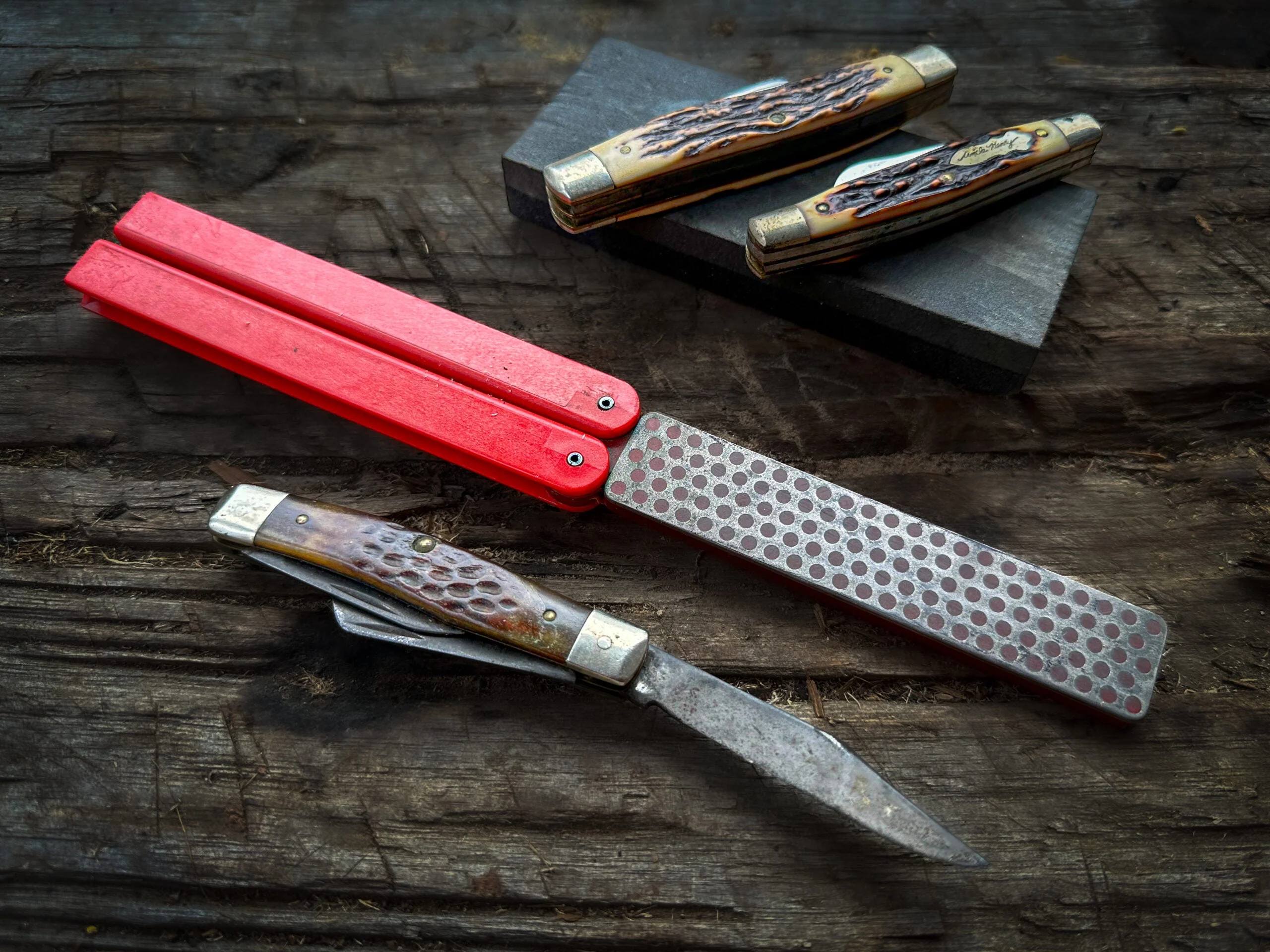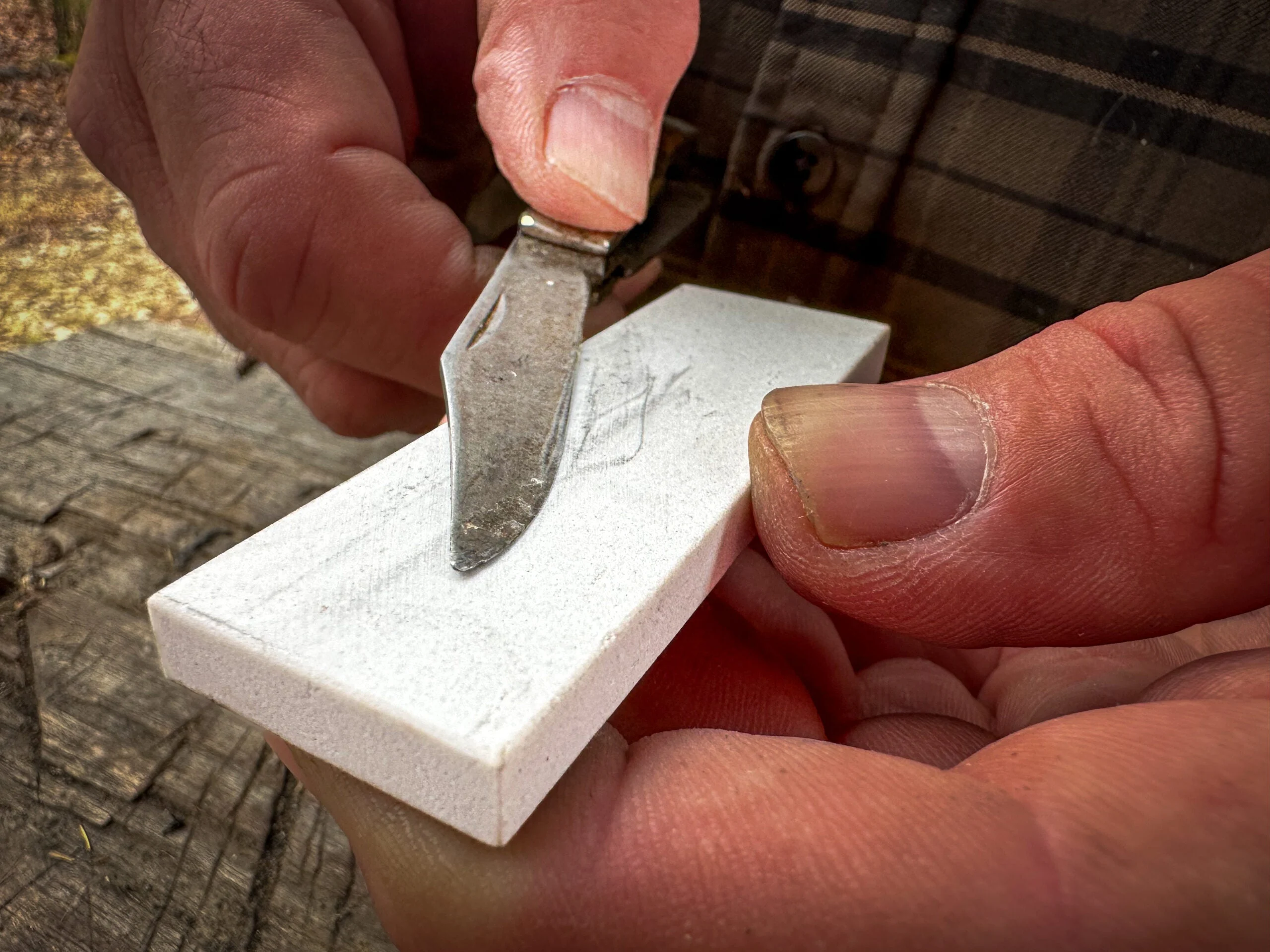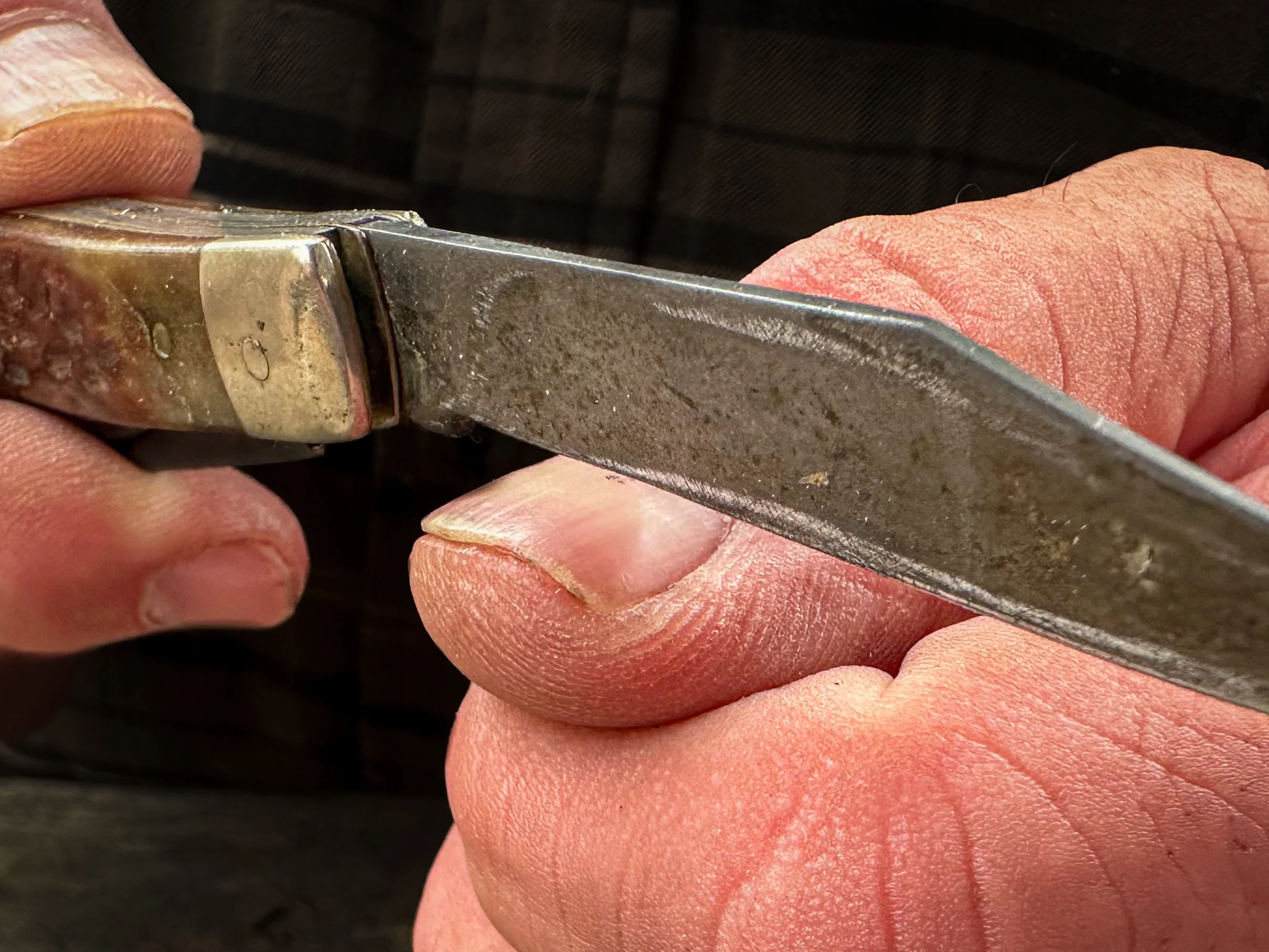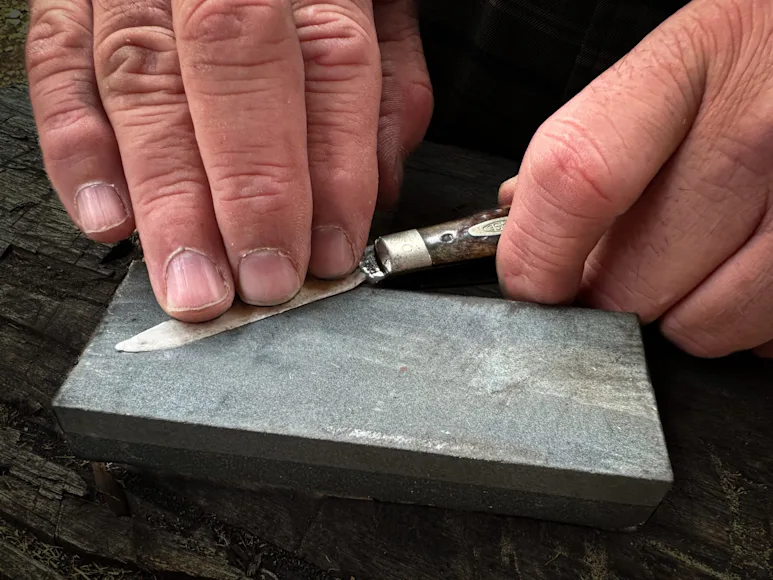_We may earn revenue from the products available on this page and participate in affiliate programs. Learn more ›
_
I remember my dad giving me my first Barlow pocket knife as a child. I still have it. It is also still sharp because he taught me how to sharpen a pocket knife it on the same day, along with a strong and hearty discussion on safety. The best pocket knives
are indispensable for outdoor enthusiasts, campers, and anyone who values preparedness. A sharp knife
is not just a tool; it’s a companion for daily tasks. But over time, even the best knives
get dull. Sharpening a pocket knife isn’t just about restoring its edge but respecting the tool and ensuring your safety. A dull knife can be more dangerous than a sharp one, as it requires more force and can slip easily.
In this guide, we’ll delve into the art of knife sharpening a pocket knife. We’ll cover different tools and techniques to suit everyone, from beginners to seasoned users. By the end of this journey, you’ll know how to sharpen a pocketknife and understand the principles behind each stroke, the item used, and the satisfaction of maintaining your blade.
How to Sharpen a Pocket Knife: Step-By-Step Instructions

Gather your supplies (including any dull pocket knives) before you get started. Jennifer Caudill
1) Select a Sharpening Tool
The first step in knowing how to sharpen a pocket knife is choosing the right tool. There are several options: whetstones, diamond stones, ceramic rods, and more. All of these sharpening devices come in different grades or grit. A rough surface is used first, then the smoother surfaces. We’ll focus on using a whetstone—a popular and practical choice. With modern technology, diamond stones are very lightweight and easy to use.
**Read Next: The Best Knife Sharpeners
**
2) Prepare the Whetstone
Soak the whetstone in water for 10 to 15 minutes. This step in learning how to sharpen a pocket knife is crucial as it lubricates the stone, making the sharpening process smoother and protecting it from damage. Water on the stone also allows the pocket knife blade to glide smoothly across the surface without too much “grab.” When a blade grabs too much, it will remove too much metal from the blade at once. Removing small amounts of metal allows you to keep the edge even on both sides.
3) Set the Angle Before You Sharpen a Pocket Knife
One of the critical aspects of sharpening a pocket knife is maintaining a consistent angle. For most pocket knives, a 20-degree angle per side is ideal. You can use an angle guide if you’re a beginner. The key here is knowing how to feel the angle on the stone. Place your knife on the stone until you feel the rest comfortably and evenly. You can visually inspect to keep this angle. After a lot of practice, I am able to keep a small portion of my finger on the back side of the blade so I feel the angle as I am sharpening.

Twenty degrees is a good angle to use on a stone when sharpening a pocket knife. Jennifer Caudill
4) Sharpen the First Side
Hold the knife with your dominant hand and use your other hand to stabilize the blade. Start with the coarse side of the stone. Push the blade away from you, moving from the heel to the tip, maintaining the angle. Repeat this motion about several times. Knowing the steel your knife is made of will help you determine the number of strokes you make. Stainless steel blades are typically more dense and complex and will, therefore, take more strokes. Whereas a blade primarily made of softer carbon steel will take less. A good number to start with when learning how to sharpen a pocket knife is about five strokes.
5) Sharpen the Second Side
Flip the knife and repeat the process on the other side. Ensure you sharpen both sides equally to maintain the blade’s balance. If you are new to the process of learning how to sharpen a pocket knife, then stop and visually inspect the blade as you do this. For stubborn sharpened blades, I will shine a flashlight down on the blade’s edge to help expose the sharp edges to ensure they appear even.
6) Check the Sharpness of the Pocket Knife
There are many different ways of doing this. The old-school method is to see if it will shave hair off your arms. Another is to use a piece of paper and see if the knife will cut through it with little effort. Lastly, I use the one to drag the sharpened edge across your thumbnail. If it starts to cut into the nail, it is sharp and cutting; if it glides smoothly, it is dull and needs more work. With each of these methods, do them properly so you don’t cut yourself in the testing process.

If the knife edge immediately bites into your thumbnail, it’s sharp. Jennifer Caudill
7) Refine the Edge of the Pocket Knife
Switch to the finer side of the stone and repeat the process. This step in learning how to sharpen a pocket knife hones the edge, making it razor-sharp. If you regularly sharpen your knives after use, then using the finer edge of the stone is where you will start, most likely. You should also continue to add water to the stone at this step. If not, then more metal is ground off than you expect. Soak it regularly in water.
8) Put the Final Touches on a Sharpened Pocket Knife
Finish by stroking the blade lightly on both sides with a leather strop. This serves to remove any remaining burrs from the edge. These burrs are hard to see and feel if you are new to the process, but with time will become very noticeable. Clean the knife with a damp cloth.
9) Keep Your Pocket Knife Sharp
Regular honing with your strop will keep the knife sharp longer. If you stop after each blade use, you will likely not need to put it on a stone. It just takes patience and dedication to strop it regularly. You can use the leather on your belt or boots or have a dedicated strop. I keep a stone in a leather sheath with all my tools and a larger strop on my workbench.
10) How to Store Your Pocket Knife and Keep it Sharp
Oil the blade with a preservative oil if you don’t plan on using it to cut any type of food. Petroleum-based oils are not suitable to ingest. Use vegetable, olive, or coconut oil if you will cut food with it. They all serve to preserve it but don’t cause problems if ingested. Store it in a dry place to prevent rust.
FAQs
What can you sharpen a pocket knife with?
You can sharpen a pocket knife with various tools, including whetstones, diamond stones, ceramic rods, and pull-through sharpeners. Each tool has advantages, but whetstones are often favored for their effectiveness and control.
Can you sharpen a stainless steel pocket knife?
Yes, you can sharpen a stainless steel pocket knife. Stainless steel is more complicated than carbon steel so that it may require more time or a diamond stone for effective sharpening. Most people find that stainless steel sharpening will involve twice or three times the strokes or time dedicated to the sharpening process compared to similar carbon-steel knives of similar style.
What is the best tool to sharpen a pocket knife?
The best tool depends on your skill level and preferences. Many experts recommend a whetstone for its versatility and the control it offers. Beginners might prefer guided sharpeners or pull-through models for ease of use.
Can I sharpen my pocket knife with a kitchen sharpener?
Yes, you can use a kitchen sharpener for your pocket knife, especially if it’s a handheld model. These sharpeners are convenient for quick touch-ups but might not provide the same level of precision as a whetstone or diamond stone. Just make sure that the angle of the blade matches the angle of the kitchen sharpener.


